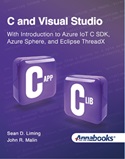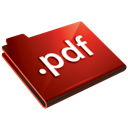
|
| |
|
|
| |
FPGA and MCU Projects
|
| |
Coverage for articles and projects for
FPGAs and MCUs
|
|
|
|
|
| |
Books
|
| |

|
With billions of devices connecting to the cloud,
the need for more programmers with a range of
skill sets is more present than ever. Most high
schools in the United States teach high-level
languages such as Java, Python, or Javascript.
These programming languages are perfect for web or
application programming, but many of the billions
of devices run on MCUs or FPGAs, which require C
programming. Microsoft has been shifting its
product and support plan for the MCU space for
some time. Azure IoT C SDK is the solution to
connect MCU devices to Azure, and there are
examples of how to write applications to run on
Windows. Azure Sphere is a system-on-chip solution
with a built-in Linux distribution that allows
developers to write applications in Visual Studio.
Eclipse ThreadX, formally Azure RTOS, has a port
to Win32 so you can build test ThreadX
applications with Visual Studio on Windows. There
are other books that cover the GCC compiler; but
the confluence of school curriculums, the need for
low-level programmers, and the offerings from
Microsoft makes C and Visual Studio a niche book
for learning C programming using one of the most
popular IDEs in the industry.
C and Visual Studio applies the Computer Science
pedagogical approach that is used for other
programming languages to the C language. Combined
with the authors' hands-on style, anyone familiar
with a higher-level language will be able to get
up the learning curve quickly.
The first 9 chapters of the book cover the
fundamentals of C programming from data types,
program flow, arrays, pointers, data types,
search, sort, memory management, and file I/O. The
last 3 chapters introduce Azure IoT C SDK, Azure
Sphere, and Eclipse ThreadX. There are over 50
hands-on exercises to get you familiar with the C
programming language and features of Visual
Studio.
|
|
|
|
|
|
| |
Articles
|
| |
Azure RTOS and ST Microelectronics STM32
Discovery Kit IoT (STM32L4S5) – May 2023
The final Azure RTOS article for this run covers the
ST Microelectronics STM32 MCU. Like the previous
articles, this third article walks through all the
little steps to set up the development tools and an
application on Azure IoT Central. With all the tools
installed, Visual Studio Code allows you to step
through the source code running on the STM32L4S5
Discovery Kit. |

|
Azure RTOS and Microchip ATSAME54-XPro
Evaluation kit - May 2023
Our second article for Azure RTOS covers the SAM E54
MCU from Microchip. Like the first article in the
series, this second article walks through all the
little steps to set up the development tools and an
application on Azure IoT Central. With all the tools
installed, Visual Studio Code allows you to step
through the source code running on the ATSAME54-XPro
Evaluation kit. |

|
Azure RTOS and the MXCHIP IoT DevKit -
April 2023
Last year, we kicked off a series of articles with
“The Current MCU Strategy for Azure”. The article
proposed what appears to be Microsoft filling the
gap to address support for MCUs and connection to
Azure. The series of articles that followed focused
on FPGA development, which lay the foundation for
phase 2 later this year. Before we get there, we
have a series of articles on one of the go-to market
MCU products: Azure RTOS. There are a number of
quick-start guides for Azure RTOS. These guides
simply build the firmware from the command line and
upload to the board. Simple and easy to get
something up and running, but real development
requires stepping through code with a debugger. The
quick-start guides mention debugging in passing.
This first article titled “Azure RTOS and the MXCHIP
IoT DevKit” walks through all the little steps to
setup the development tools and build files to debug
the firmware using Visual Studio Code. |

|
Nios® II and I2C Master Implementation on
the on the Intel® MAX® 10-10M08 Evaluation Kit -
January 2023
We close out phase 1 of our FPGA articles with
adding I2C port to a Nios® II design. The
Inter-Integrated Circuit (I2C or I2C) provides
chip-to-chip communication on a two-wire bus. I2C
has become very popular as more sensor chip
manufacturers provide more solutions with I2C as the
interface bus. For NIOS II, there is an I2C Master
IP that can be added to a design so you can connect
various external sensor and memory I2C devices, but
there is a catch as some extra circuity is needed to
create the two wire interface. The article
demonstrates a solution to create the two wire
interface and communication with a I2C temperature
sensor. |

|
Nios® II and the Interval Timers’ Alarm
and Timestamp Functionality on the Intel® MAX®
10-10M08 Evaluation Kit - January 2023
Timing is everything. The Interval Time IP that
comes with Quartus not only provides the date and
time for a Nios II processor but also supports
alarms and timestamp functionality. The paper walks
through a couple of applications that test both. |

|
Nios® II + UART Project on Intel® MAX®
10-10M08 Evaluation Kit - December 2022
Serial ports are the most common I/O in any MCU.
Building on the previous Intel® Max® 10 + Nios® II
articles, this article looks at adding a UART to
a Nios® II processor. |

|
Nios® II ADC Implementation on Intel® MAX®
10-10M08 Evaluation Kit - November 2022
The previous article covered creating a design with
the Nios® II soft processor. This article adds the
built ADC peripheral to the Nios® II. Taking
advantage of the hardware on the Intel® MAX®
10-10M08 Evaluation Kit, an application will be
written to test the ADC input. As with the other
articles it is the little things that trip a
designer up, and this example is no exception. In
this case, a work around to a generated BSP issue is
required. |

|
A Simple Nios® II Implementation on Intel®
MAX® 10-10M08 Evaluation Kit - November 2022
The Nios® II softcore processor allows developers to
create their own MCU with peripherals and other glue
logic in an FPGA. The article looks at creating a
Nios® II design using the Intel® Quartus®
development tools, and writing a C program to test
the design. |
 |
Implementing the ADC on Intel® MAX®
10-10M08 Evaluation Kit - October 2022
The paper explores the MAX 10's built in ADC and the
ADC Toolkit that comes with Intel® Quartus® Prime. |

|
Getting Started with Intel® Quartus® Prime
v21.0 and the Intel® MAX® 10-10M08 Evaluation Kit
- October 2022
The first FGPA article discussed how to install the
Intel® Quartus® Prime tools. In this second FPGA
article, we look at creating a couple of circuits
using VHDL and the schematic editor. The Intel Max
10 -10M08 Evaluation Kit will be used to test both
designs. |

|
| Intel® Quartus® Prime Lite and Nios® II
SBT for Eclipse Installation Instructions -
October 2022
This article covers the setup
for Quartusl® Prime Lite and Nios® II SBT for
Eclipse for two different development systems:
Windows 10 and Ubuntu 18.0.4.
|

|
The Current MCU Strategy for Azure -
September 2022
With Windows CE long gone, Microsoft has slowly
developed a strategy to support 32-Bit MCUs and
connecting these devices to Azure. |

|
| Azure Sphere SDK: First Look - January
2019
A review of the new MCU IoT offering from
Microsoft
|
 |
|
|
|
|
|
|
|
| |
|
| |
|
|
| |
|
|
| |
|
|
|










